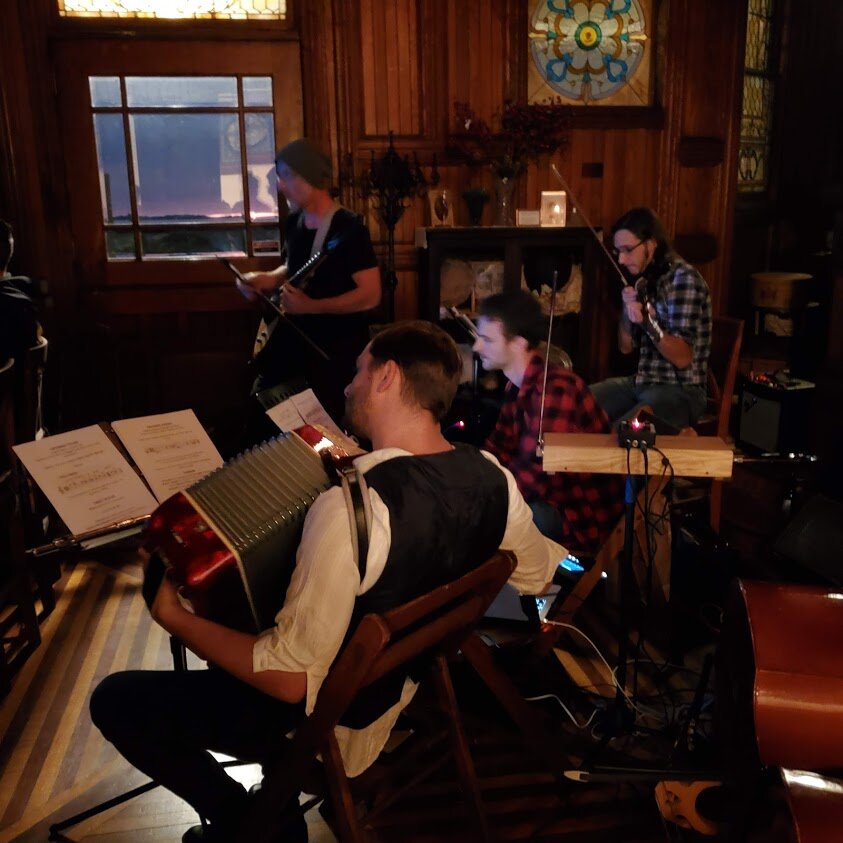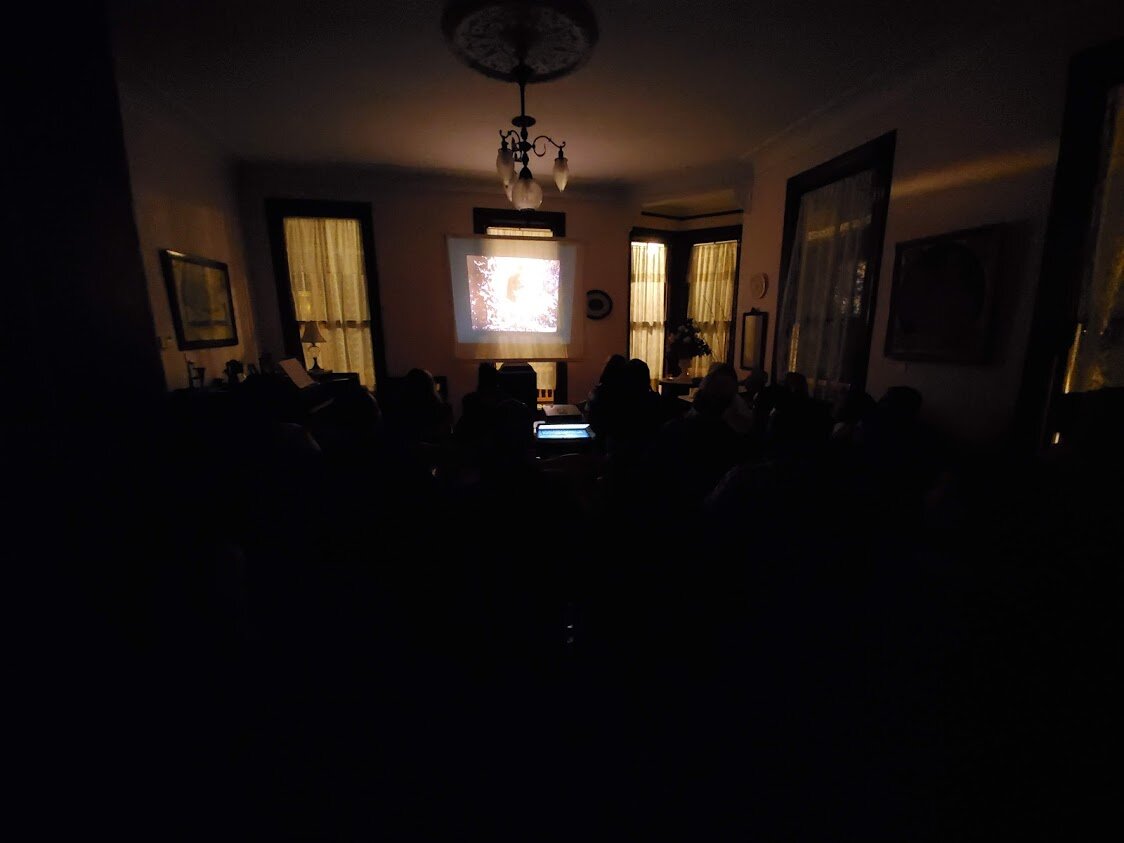Four Years Strong, Nosferatu Remains a Favorite October Tradition
By Greg Caggiano, AHHS Board Member
When our October events committee decided to expand spooky programming throughout the entire month four years ago (rather than just the last two weekends), we thought we would begin with a movie. But it could not be something ordinary. We thought why not attempt a screening of the silent classic Nosferatu, but with live musical accompaniment? This would be easier said than done. Who would provide the music? We were fortunate to have so many talented musicians at our disposal thanks to our monthly "Music at the Mansion" series. Following a unique performance featuring instruments not in the norm in the summer of 2016, I approached Cody McCorry (of Thank You Scientist and We Used to Cut the Grass) to see if he would take on the task of scoring the 90 minute horror film. He enthusiastically agreed.
Along with his friends, fellow band-mates, and also regulars of our music series (Daimon Alexandrius, Jon Francis, Mike Noordzy, Ben Karas, and Kevin Grossman), they attempted the herculean task of playing 90 straight minutes of music in synchronization with what was seen on the screen. Instruments featured aside from the usual violin, percussion, and keyboard included a theramin, accordion, guitarviol, mellotron, and saw and bass (among others). The first three years of performances also included a visit from A.J. Merlino, who would drive in from Reading, PA with his massive antique cimbalom (a type of concert dulcimer weighing hundreds of pounds that had to be loaded onto a pickup truck) which added to the spookiness.
The first year sold out before we could blink. We had only one showing. It was met with rave reviews. The feedback was so overwhelming that we had to repeat it the next year and add a second showing...at midnight. The first screening of the second year also sold out, and while the midnight one did not, it attracted a rather large group of die-hards who wanted the rare opportunity of seeing such a film in the haunted ambiance of the Strauss Mansion Museum at the stroke of midnight. The next two years, we maintained the two showings, but made them a little earlier, such as at 7 and 10 PM.
Even four years later, they continue to sell out. Now, in 2019, we attracted our largest combined audience across two sold out shows. Why has it been so popular? It could be that Nosferatu is becoming the preeminent early October tradition in our area. People know about it and expect it. They start asking about it months in advance. The other reason is that it attracts repeat customers because Cody changes the lively score every year. It is amazing to hear the variations that he and his band-mates come up with.
The first year we tried this, following a standing-ovation performance, I asked Cody how much preparation went into scoring this silent film. He responded that he watched it only once, took detailed notes about the scenes and timing, and told the others to follow his lead. For someone such as myself who is not musically inclined whatsoever, I found this astounding— a real mark of talent. These guys are true pros, and we are reminded of this every year. We are grateful that they keep wanting to come back!
Nosferatu kicks off our October schedule annually. It also helps us with much-needed fundraising for the Strauss Mansion Museum. You can expect it back again in 2020. Just do not wait to register once we announce it, because it will surely sell out yet again.
I would like to thank the following people for making Nosferatu possible: Sponsors Kunya Siam Thai Restaurant, the Blue Bay Inn, Carmen and Doug Craner, and Atlantic Cinemas (for providing free popcorn to our guests). Musicians Cody McCorry, Daimon Alexandrius, Jon Francis, Ben Karas, Kevin Grossman, and Mike Noordzy. To Audra Mariel and Ken Frantz for providing food and refreshments to the volunteers and musicians. Lastly, to Lou Fligor, Patty Bickauskas, Lynne Petillo, and Patrick Osborn for their help behind the scenes.








